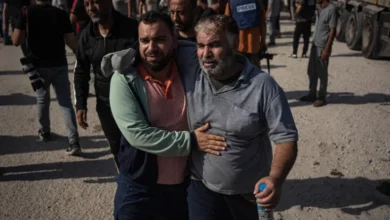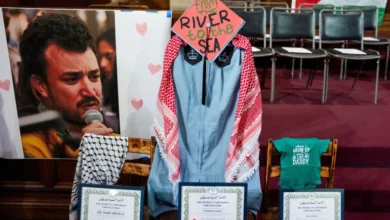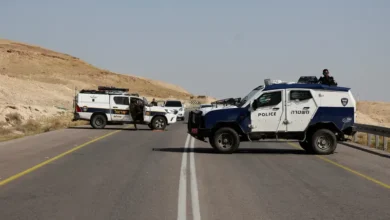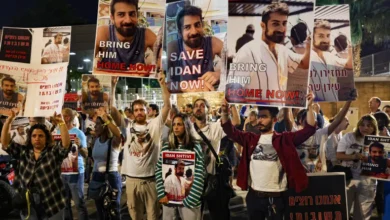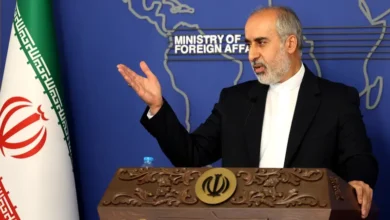The grim accounting system of Gaza’s Nasser hospital
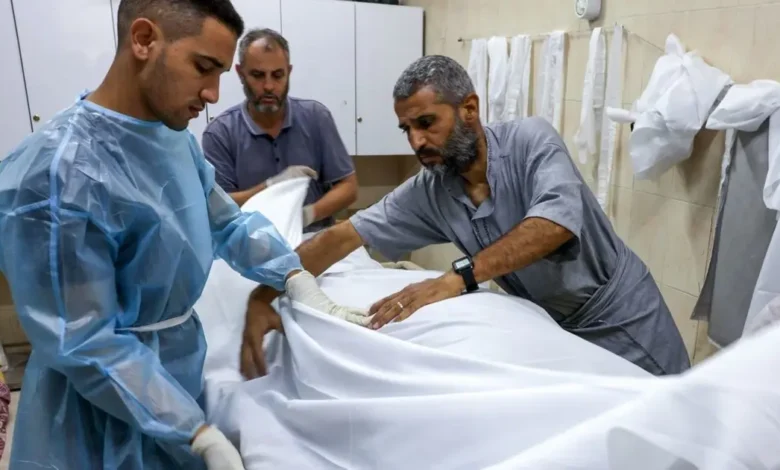
A pathologist checks a body in the morgue of the Gaza Strip’s Nasser hospital, takes a photo and notes their name and the place where bombs killed the victim.
The doctor is adding another name to a long list of “martyrs” in the ongoing war between Hamas and Israel.
“Between midnight and noon, 17 martyrs, and five others who died of natural causes, came in,” Dr Nahed Abu Taaema, director of the Nasser hospital in Khan Yunis in the south of the Palestinian territory, tells AFP.
On his computer, Taaema shows AFP a program in which “martyrs” — the term Palestinians use to designate those killed in the war with Israel — are listed under one tab, with other dead grouped separately.
“The forensic pathologist writes out a full report, seals it and sends it to the office of patient management, which is responsible for entering the information in a database linked to the ministry of health,” he adds.
Using the information supplied, employees of the office of patient management fill out a file with the details of each martyr before adding the information to the computer database.
“People who die of natural causes are not taken to the morgue to be examined by pathologists, unless the death seems suspect,” Dr Taaema says.
On October 26, the health ministry of the Hamas-run government in Gaza published the names of some 7,000 Palestinians killed since the outbreak of war with Israel on October 7.
The Palestinian death toll from constant Israeli bombardment of the besieged territory has since risen to more than 8,300, the majority of them civilians.
By publishing its list, the ministry intended to prove its credibility, after the veracity of death tolls in Gaza was questioned by US President Joe Biden.
Horror at the cafe
US support for Israel has been unwavering since the beginning of the war, sparked by an unprecedented attack by Hamas that left more than 1,400 people dead in Israel, mostly civilians, according to Israeli authorities.
Some victims of air strikes on Gaza are registered as “unknown”, and their files are updated later when the bodies are identified by families.
For Rizk Abu Rok, a 24-year-old paramedic with the Palestinian Red Crescent, transporting those killed and wounded by Israeli bombardment to the hospital has become a daily routine.
But nothing could prepare him for the horror he experienced on October 22.
After receiving a report that the Rio Cafe in Khan Yunis had been hit, Abu Rok rushed to the scene in an ambulance, gripped with fear in the knowledge that his father and other relatives had been sheltering there.
“I was convinced that I was about to carry out the bodies of people I love very much,” he said.
Arriving at the site of the bombing, he treated a seriously wounded person and gave him first aid before taking him back to the Nasser hospital.
“When I arrived, I rushed to the emergency room and found my father there. He had a head wound. I knew immediately that he was dead.
“I collapsed and lost my nerve. The nurses brought me outside to calm me down.”
When he came back to his senses, Abu Rok went back inside to the emergency room to see if any more of his relatives were there.
“I found them all, one after the other: Ajnad, Jamal and Talal Abu Rok, Mohammed Abu Rjeileh and Ahmad Qodeih. They were all killed in the cafe along with another 10 people.”
The bodies were taken to the morgue to be examined by the pathologist, adding yet more numbers to the Nasser hospital’s grim accounting system.

